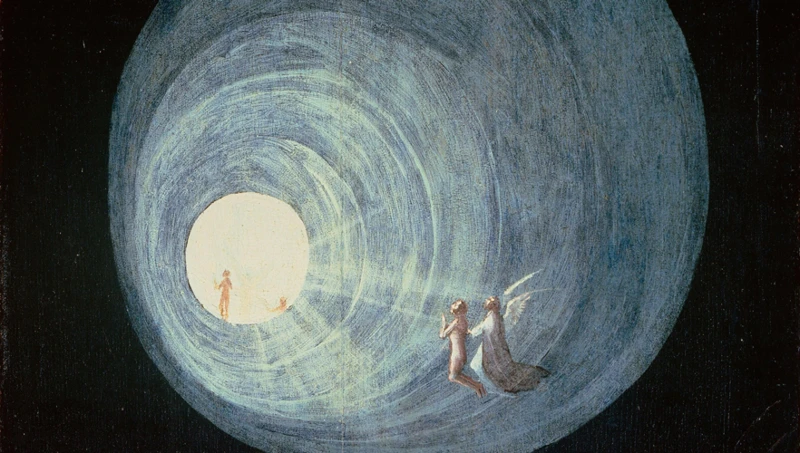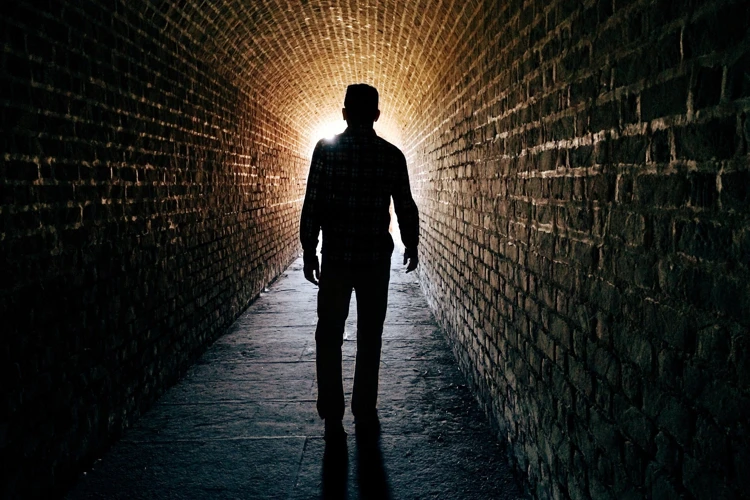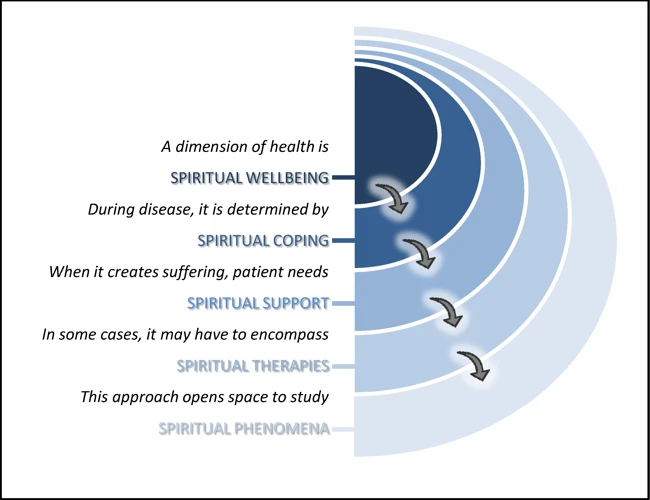As the ultimate mystery of human existence, death has captured the curiosity and imagination of people across cultures and religions for millennia. One phenomenon that has perplexed scientists, theologians, and philosophers alike is the near-death experience. These awe-inspiring events occur when individuals come close to death or experience clinical death and report mystical, profound, and transformative encounters with a realm beyond our physical reality. Although near-death experiences are universal, they are often interpreted and contextualized differently across cultural and religious boundaries, highlighting the profound influence of cultural and religious beliefs on the human experience. In this article, we will explore the impact of cultural and religious beliefs on near-death experiences and their interpretation, and the intersection of culture, religion, and science in understanding this profound phenomenon.
The Meaning of Near-Death Experiences

As humans, we all wonder about the mysteries of death, and what happens to us after we die. Near-death experiences, or NDEs, provide us with a glimpse into another realm that is difficult to put into words. NDEs are reported across different cultures and religions, and often share similar themes and characteristics. In this section of the article, we will explore the fascinating concept of near-death experiences, what they are, why they matter, and how they can impact an individual’s cultural and religious beliefs. To better understand NDEs, we must first define them and examine their common characteristics.
What Are Near-Death Experiences?
Near-death experiences, often referred to as NDEs, are extraordinary experiences that can occur when a person is close to death or has been declared clinically dead. These experiences, regardless of cultural or religious beliefs, have certain common elements that are reported by individuals who have experienced them. These common elements include:
| Common Elements of Near-Death Experiences |
|---|
| Out-of-body experiences |
| A sense of peace or calm |
| Tunnel experiences or moving through a dark space |
| Meeting deceased loved ones or spiritual entities |
| Life review, sometimes referred to as a ” panoramic life review” |
| A sense of being outside of time |
| A sense of a border or point of no return |
| Reluctance to return to the physical body |
The experience of a near-death experience is not always positive and can vary greatly from person to person. Some people do not report any experiences during a near-death experience, while others may describe negative experiences such as encountering demonic entities or feeling a sense of despair. The interpretation of a near-death experience is often influenced by cultural and religious beliefs, as well as personal experiences and expectations.
If you want to learn more about the science behind near-death experiences, you can check out our article on the physics of near-death experiences.
Why Do Near-Death Experiences Matter?
Near-death experiences are a phenomenon that has gained considerable attention in recent years, both among scientists and the broader public. They matter for a number of reasons:
1. They challenge our understanding of consciousness and the nature of death: Near-death experiences are often described as vivid and meaningful, with a sense of being outside one’s body and encountering supernatural beings or a transcendent realm. This challenges the belief that consciousness is entirely generated by the brain and that death marks the end of conscious experience.
2. They provide insight into the human experience: Near-death experiences offer a unique perspective on the human experience of dying and the afterlife, which has been a topic of interest and speculation among people throughout history. They also shed light on the psychological and emotional aspects of death and dying.
3. They impact individuals’ beliefs and values: For many individuals who have had a near-death experience, it can be a life-changing event that leads to spiritual or religious transformation, changes in values and priorities, and new perspectives on life and death.
4. They have implications for medical practice and end-of-life care: Understanding near-death experiences can help medical professionals provide better care to patients who are dying or have had a near-death experience. For example, knowledge of common elements of these experiences can help medical staff support and reassure patients and their families.
Near-death experiences can lead to personal transformation and a deeper appreciation of life and death. They also challenge our current understanding of consciousness and have practical implications for medical practice and end-of-life care.
To understand the neuroscience behind near-death experiences, read here. Also, to learn about common elements in these experiences, click here.
Religious and Cultural Influences

As we delve deeper into the world of near-death experiences, it becomes increasingly clear that an individual’s cultural and religious beliefs play a significant role in shaping their perceptions of such phenomena. It is fascinating to explore the numerous ways in which religious and cultural influences impact the way people interpret and react to events that occur during near-death experiences. In this section, we will examine the role of religion in near-death experiences, as well as how culture affects such experiences. Join us on this thought-provoking journey as we reflect on the intricate relationship between religious beliefs, cultural practices, and near-death experiences.
The Role of Religion in Near-Death Experiences
Religion plays a significant role in Near-Death Experiences (NDEs), impacting the way individuals experience them and interpret their nature. One of the main ways religion impacts NDEs is through the expectations individuals have about the afterlife. In many cases, individuals who experience NDEs have a preconceived belief about an afterlife based on their religion, which can influence their interpretation of their experience.
Additionally, religion can influence the lived experiences of individuals who have NDEs. For example, a person with a religious background may experience spiritual beings or deities during their NDE, whereas someone without a religious background may not.
Religion can also affect how individuals cope with their NDE. Believing in an afterlife can provide comfort to individuals who have had NDEs and help them make sense of their experience.
However, there can also be challenges when religion and NDEs intersect. Individuals who have NDEs may have experiences that challenge their religious beliefs or raise questions about their religion’s teachings. This can cause distress and confusion for some individuals as they try to reconcile their experience with their beliefs.
Religion plays a significant role in shaping the way that individuals experience and interpret NDEs. It can offer comfort and support, but can also create confusion and distress. Understanding the role of religion in NDEs is vital for providing appropriate support to individuals who have had these experiences.
- Religion impacts interpretation of NDEs
- Can influence lived experiences during NDEs
- Believing in an afterlife can provide comfort
- Can challenge religious beliefs and cause distress
How Culture Affects Near-Death Experiences
The cultural beliefs and traditions of a person can significantly affect their experience of near-death experiences (NDEs). Here are some ways in which culture affects NDEs:
- Beliefs about Death: In some cultures, death is viewed as a natural part of life, and an NDE may be perceived as a welcome transition to the afterlife. However, in other cultures, death is seen as something to be feared and avoided, which can lead to negative NDEs.
- Religious Beliefs: A person’s religious beliefs can influence their interpretation of an NDE. For example, a Christian may interpret an encounter with a figure of light as an encounter with Jesus, while a Hindu may interpret the same experience as an encounter with a divine being from Hindu mythology.
- Concepts of the Afterlife: Some cultures have well-defined beliefs about what the afterlife will be like, which can shape a person’s NDE. For example, a person who believes in reincarnation may experience an NDE that involves a review of their past lives or the opportunity to choose their next incarnation.
- Cultural Symbols: The symbols and images that are meaningful in one culture may not be meaningful in another. For example, an American may report seeing angels or deceased loved ones during an NDE, while a person from a culture that does not believe in these entities may describe different images or sensations.
- Language: The language a person speaks may also influence their experience of an NDE. For example, researchers have noted that individuals who come from cultures that use time-based languages (such as English) may report more linear experiences of time during their NDEs, while those who speak tenseless languages (such as Mandarin) report more non-linear experiences of time.
Culture can play a powerful role in shaping a person’s NDE. It is important to take cultural context into account when interpreting and discussing these experiences.
Different Interpretations of Near-Death Experiences Across Cultures and Religions

As near-death experiences have been reported across various cultures and religions, it is fascinating to observe how different interpretations that reflect cultural and religious beliefs have emerged regarding these experiences. The interpretations often reflect the unique perspectives that people from diverse cultural and religious backgrounds bring to their experiences. These interpretations can contribute to a more comprehensive understanding of the phenomenon of near-death experiences and may provide insights into how individuals’ cultural and religious backgrounds influence their experiences. Let’s explore some of the interpretations of near-death experiences across different cultures and religions in more detail.
Christian Interpretation
The Christian interpretation of near-death experiences is heavily influenced by the belief in an afterlife and judgment. According to Christian doctrine, a person’s ultimate destination after death is determined by their actions and faith during their life, and this judgment is carried out by God.
Heaven and Hell are the two destinations typically associated with a Christian’s afterlife. In near-death experiences, individuals have reported both positive and negative experiences. These experiences are often interpreted as visions of heaven or hell, with positive experiences being associated with heaven and negative experiences with hell.
Encounters with Angels and Departed Loved Ones are also commonly reported in Christian near-death experiences. Many individuals report seeing angelic beings, or even encounters with Jesus himself. These experiences often reinforce the belief in an afterlife and provide comfort to individuals who have lost loved ones.
Divine Judgment and Forgiveness are also prevalent themes in Christian near-death experiences. Individuals report experiencing a review of their life, with a focus on their actions and their relationship with God. Many individuals report experiencing a feeling of unconditional love and forgiveness from God, even if they feel that they did not live a righteous life.
Christian near-death experiences often reinforce the idea of an afterlife and divine judgment, as well as the importance of faith and a personal relationship with God.
Buddhist Interpretation
In Buddhist culture, near-death experiences (NDEs) are often interpreted through the teachings of Buddhism. In Buddhism, the concept of death and rebirth is central. Buddhists believe in the cycle of reincarnation, where death is not the end, but a transition to the next life. According to Buddhism, the afterlife is influenced by one’s actions in the present life, known as karma. This belief is reflected in how Buddhist individuals interpret NDEs.
During an NDE, Buddhist individuals may experience a temporary separation of the body and consciousness, or experience a connection with a divine entity. These experiences are believed to be influenced by the individual’s karma and their actions in the present life. The experience of meeting a divine entity during an NDE is seen as an opportunity for the individual to reflect on their actions and strive for a better future life.
In Buddhist culture, the interpretation of NDEs is closely linked to the concept of impermanence. Buddhists believe that all things in life are impermanent, and death is a reminder of this teaching. NDEs are seen as an opportunity for individuals to reflect on their impermanence and strive towards enlightenment.
The interpretation of NDEs in Buddhist culture is heavily influenced by the teachings of Buddhism, particularly the concepts of death and rebirth, karma, and impermanence. These interpretations provide individuals with the opportunity for reflection, self-improvement, and enlightenment.
Islamic Interpretation
The Islamic interpretation of near-death experiences is heavily influenced by the Quran and the teachings of Prophet Muhammad. In Islam, death is seen as a transition to the afterlife, where the soul continues to live on. The belief in the afterlife is a central tenet of Islam and is reflected in the Islamic interpretation of near-death experiences.
Islamic scholars believe that near-death experiences are a glimpse of the afterlife, and they provide insight into the nature of the soul and the journey that it must undertake after death. According to their interpretation, when the body dies, the soul separates from the body and travels to a place called Barzakh, a transitional realm between the world of the living and the afterlife.
During a near-death experience, a person’s soul is believed to leave their body temporarily and enter Barzakh. In this realm, the soul is judged based on its actions in the world and is either granted a place in paradise or punished in hell. The experience of Barzakh is said to be a reflection of a person’s actions and beliefs during their lifetime.
Islamic scholars also believe that the experience of the afterlife is different for everyone, and the interpretation of the experience depends on a person’s faith, actions, and beliefs. They believe that the ultimate purpose of near-death experiences is to provide guidance to individuals on the right path to follow in their lives.
Table
| Beliefs | Explanation |
|---|---|
| Death | Seen as a transition to the afterlife, where the soul continues to live on. |
| Afterlife | Central tenet of Islam. Islamic scholars believe that NDEs are a glimpse of the afterlife where the soul is judged based on its actions in the world and is granted a place in paradise or punished in hell |
| Barzakh | A transitional realm between the world of the living and the afterlife, where the soul is temporarily placed during a near-death experience. |
| Experience of afterlife | Different for everyone, and the interpretation of the experience depends on a person’s faith, actions, and beliefs. |
The Islamic interpretation of near-death experiences offers a unique perspective on the nature of the soul and the afterlife. It emphasizes the importance of living a righteous life, as this ultimately affects a person’s experience in the afterlife. Understanding these beliefs and interpretations is crucial in appreciating the diversity of cultural and religious influences that shape our understanding of near-death experiences.
The Intersection of Culture, Religion, and Science
As we delve deeper into the phenomenon of near-death experiences, it becomes apparent that they cannot be fully comprehended without considering their intersectionality with culture, religion, and science. This complex web of influences has both shaped and been shaped by the interpretation and understanding of these experiences. By examining the various ways in which culture, religion, and science intertwine to influence near-death experiences, we can gain a deeper awareness of the complexities of this phenomenon and better understand the impact it has on individuals and society as a whole.
How Science Attempts to Explain Near-Death Experiences
Near-death experiences (NDEs) have been studied extensively by scientists in an attempt to provide an explanation for these mystical experiences. Many scientists propose that NDEs are simply a chemical reaction in the brain caused by lack of oxygen or blood flow, which creates a hallucinogenic experience. However, this explanation does not fully account for the vivid and detailed nature of NDEs, including encounters with deceased loved ones and spiritual beings.
Other scientists suggest that NDEs are a result of the brain trying to make sense of the dying process. The brain may piece together fragmented memories and create a coherent story or spiritual experience, as a way of coping with the traumatic event of nearing death. This theory is supported by the fact that many NDEs include a life review, in which the individual sees their entire life flash before their eyes.
Another explanation proposed by scientists is that NDEs are a result of changes in the brain’s neurotransmitters and electrical activity. Studies have found that NDEs are associated with a surge of electrical activity in the brain, including the release of the neurotransmitter glutamate, which can cause feelings of euphoria and spiritual experiences. However, this theory also fails to fully explain the deeply impactful and transformational nature of NDEs.
Perhaps the most intriguing explanation for NDEs comes from quantum physics, which suggests that consciousness itself may be a fundamental aspect of the universe, separate from the brain. This theory proposes that consciousness is non-local, and can exist outside of the physical body, allowing for experiences beyond the constraints of space and time. While this theory is still highly debated among scientists, it offers a tantalizing possibility for further exploration and understanding of NDEs.
To summarize, while science has proposed various theories to explain NDEs, none fully accounts for the profound and transformative nature of these experiences. Further research and exploration is necessary to fully understand the complexities and mysteries of NDEs.
| Explanation: | Pros: | Cons: |
| Chemical Reaction | Can explain some physical sensations and hallucinations in NDEs | Does not account for the vivid and detailed experiences |
| Brain Trying to Make Sense of Dying Process | Accounts for life review aspect of NDEs | Does not fully explain transformative nature of NDEs |
| Changes in Brain’s Neurotransmitters and Electrical Activity | Explains surge of electrical activity in the brain during NDEs | Does not account for spiritual experiences or transformative nature of NDEs |
| Consciousness is Non-Local/ Separate from Brain | Offers possibility for explanation beyond physical body and constraints of space and time | Highly debated among scientists |
The Importance of Understanding Near-Death Experiences Within Their Cultural Context
When trying to understand near-death experiences, it is crucial to take into account the cultural context in which they occur. Here are a few reasons why:
- Belief systems: The beliefs and myths surrounding death differ from culture to culture. This means that the way people experience near-death can vary depending on their cultural background. For example, in some cultures, death is seen as a natural transition from one phase of existence to another, while in others it is considered a beginning of a journey to the afterlife. These different beliefs can influence how people interpret their near-death experiences.
- Symptoms: The symptoms of a near-death experience can be interpreted differently in different cultures. For instance, the feeling of leaving one’s body might be interpreted as a spiritual journey in some cultures, while in others it might be seen as a symptom of mental illness or drug use.
- Explanations: Wrapping up how different cultures explain near-death experiences is important. Understanding these differences helps us to avoid making assumptions based on our own beliefs and cultural background. For instance, some cultures tend to attribute near-death experiences to spiritual practices, while others tend to see them as a physiological response to trauma or physical stress.
To gain a comprehensive understanding of near-death experiences, it is important to respect and consider the cultural context in which they occur. By doing so, we can learn to respect and appreciate other cultures, and gain a richer understanding of the human experience.
Conclusion
After examining the impact of cultural and religious beliefs on near-death experiences, it’s clear that these experiences are shaped by a variety of factors. While some features of near-death experiences appear to be universal, there are many differences in their interpretation across cultures and religions.
Religion plays a significant role in shaping near-death experience narratives. Christians, for example, often interpret their experiences in light of their religious beliefs about the afterlife and judgment. Muslims, on the other hand, may report experiencing encounters with Islamic figures such as the Prophet Muhammad or angels. Buddhists often report experiencing a sense of oneness with the universe, which is consistent with their belief in the interconnectedness of all things.
Culture also plays an important role in shaping near-death experiences. Different cultures have different beliefs about what happens after death and what the purpose of life is. Therefore, they may interpret their experiences through the lens of those beliefs. For example, some cultures believe in reincarnation, and those who have had a near-death experience may see it as evidence of past lives.
Despite these cultural and religious differences, there are also universal themes that emerge from near-death experiences. The feeling of peace and contentment, the sense of having left one’s body, and the presence of a bright light are all commonly reported features. These similarities show that regardless of one’s cultural or religious background, near-death experiences can still be a unifying experience for humanity.
In the intersection of culture, religion, and science, there is still much to be learned about near-death experiences. While science attempts to explain these experiences through physiological and psychological mechanisms, it’s important to understand them within their cultural context. By doing so, we can gain a deeper appreciation for the richness and complexity of these experiences.
In conclusion, near-death experiences are complex phenomena that are shaped by a variety of factors, including culture, religion, and personal beliefs. While there are universal themes that emerge from these experiences, there are also significant differences in how they are interpreted across cultures and religions. A better understanding of these experiences can shed light on the intersection of culture, religion, and science, and deepen our appreciation for the diversity of human experience.
Frequently Asked Questions
What is the percentage of people who report having a near-death experience?
Approximately 10-20% of people who are close to death, either through illness or trauma, report having a near-death experience.
Can near-death experiences be explained by medical reasons?
While certain physiological factors, such as lack of oxygen or high levels of carbon dioxide, can contribute to the experience, it cannot be fully explained by medical reasons.
Do all cultures and religions have a belief in near-death experiences?
A belief in near-death experiences is not universal and varies greatly across different cultures and religions.
Can religious beliefs influence the content of a near-death experience?
Yes, research has shown that religious beliefs and cultural background can greatly influence the content of a near-death experience.
Is it possible for people to have similar near-death experiences despite coming from different cultures and religions?
Yes, there are common themes and experiences reported in near-death experiences across cultures and regardless of religious beliefs.
Are near-death experiences considered a spiritual or a scientific phenomenon?
Near-death experiences are often considered to be both spiritual and scientific, as they involve a combination of subjective experiences and measurable physiological changes.
Can near-death experiences have a long-lasting impact on a person’s life?
Yes, many individuals report significant changes in their attitudes, beliefs, and overall outlook on life following a near-death experience.
Do skeptics believe in the validity of near-death experiences?
Skeptics often question the validity of near-death experiences and are more likely to attribute them to hallucinations, oxygen deprivation, or other physical factors.
Do religious institutions recognize the validity of near-death experiences?
Religious institutions may or may not recognize the validity of near-death experiences, as beliefs about death and the afterlife vary greatly between different faiths.
Can near-death experiences have a beneficial impact on end-of-life care?
Studies have shown that understanding and acknowledging a patient’s near-death experience can help to improve their end-of-life care and overall quality of life.








